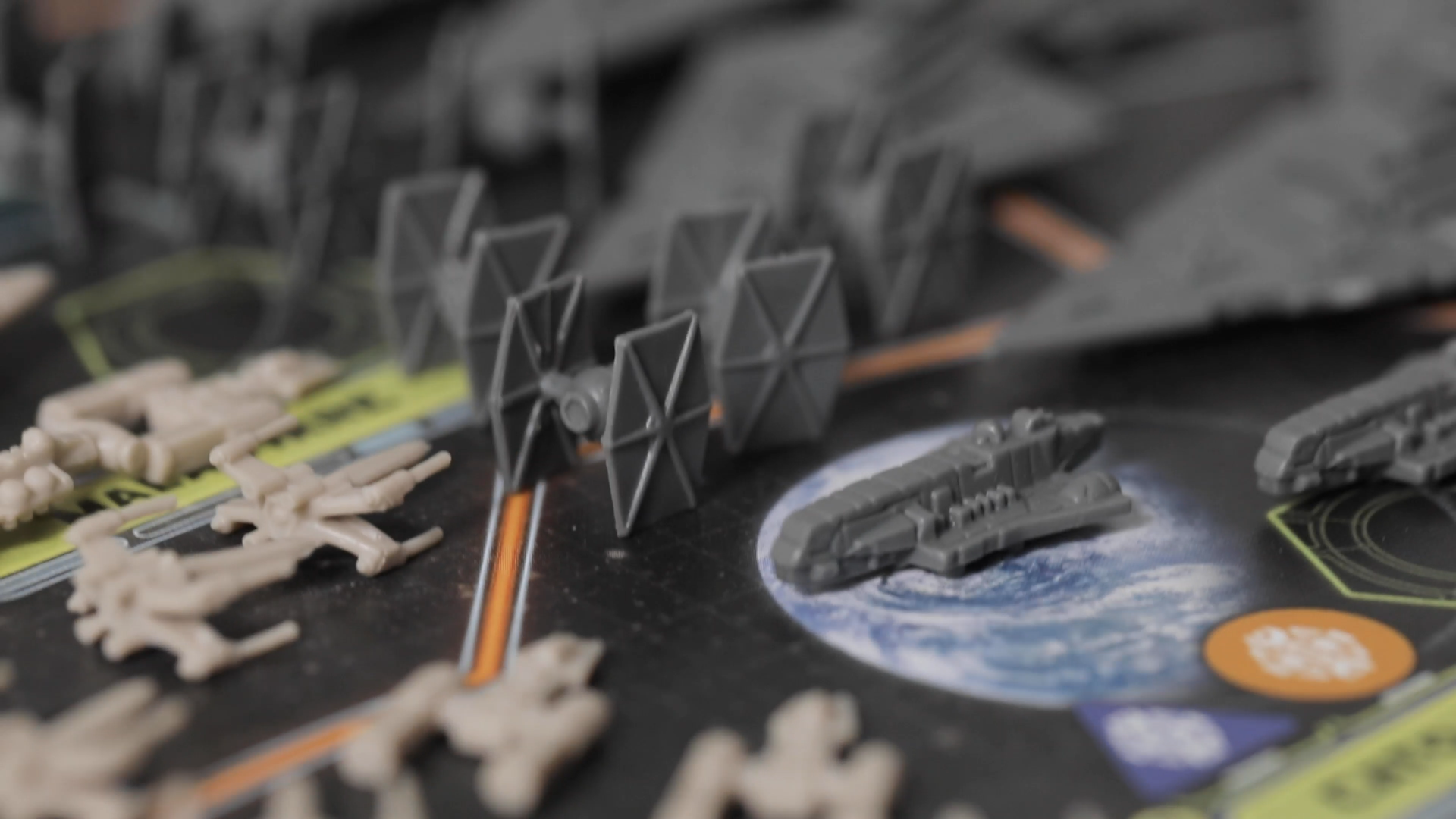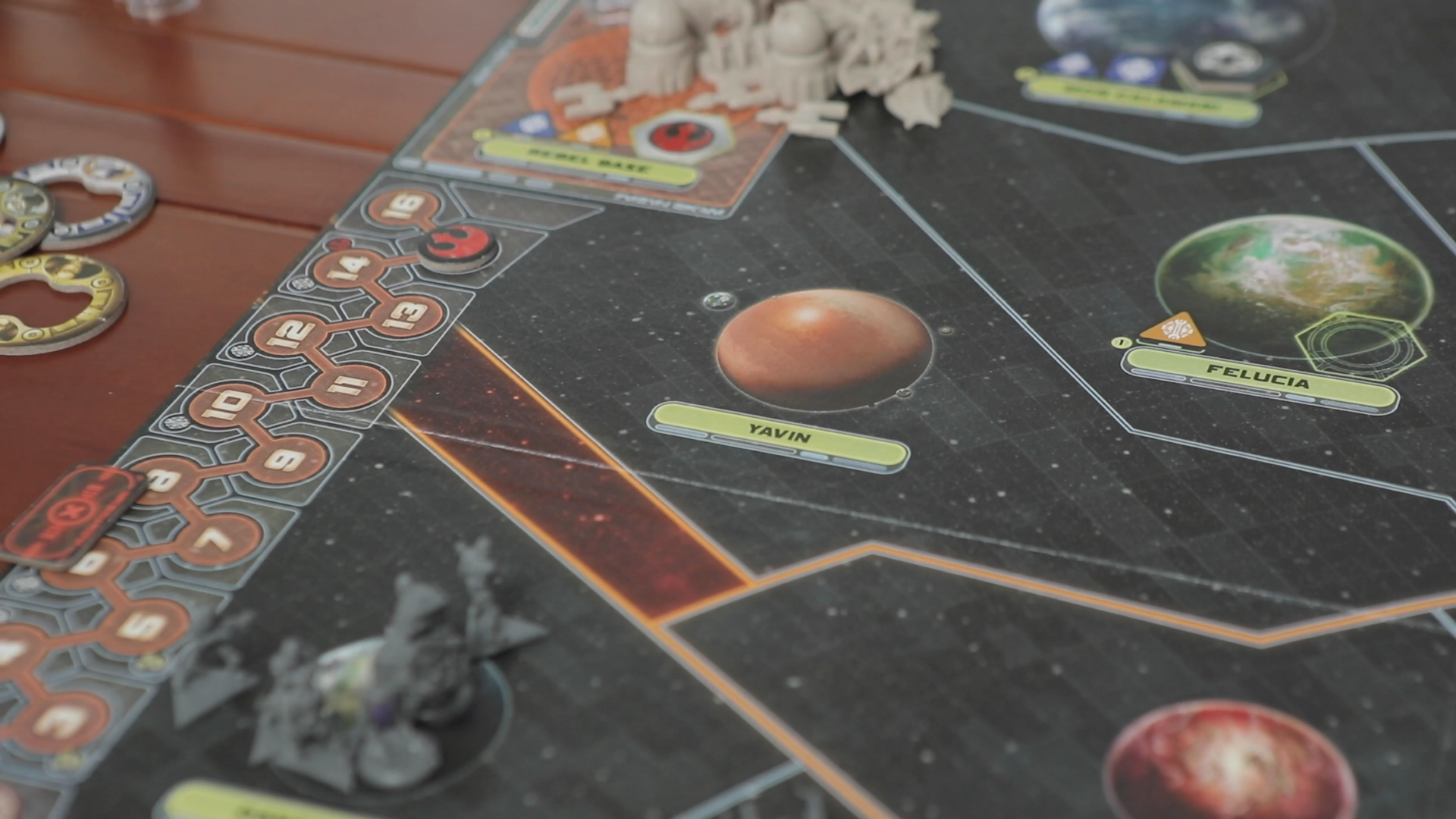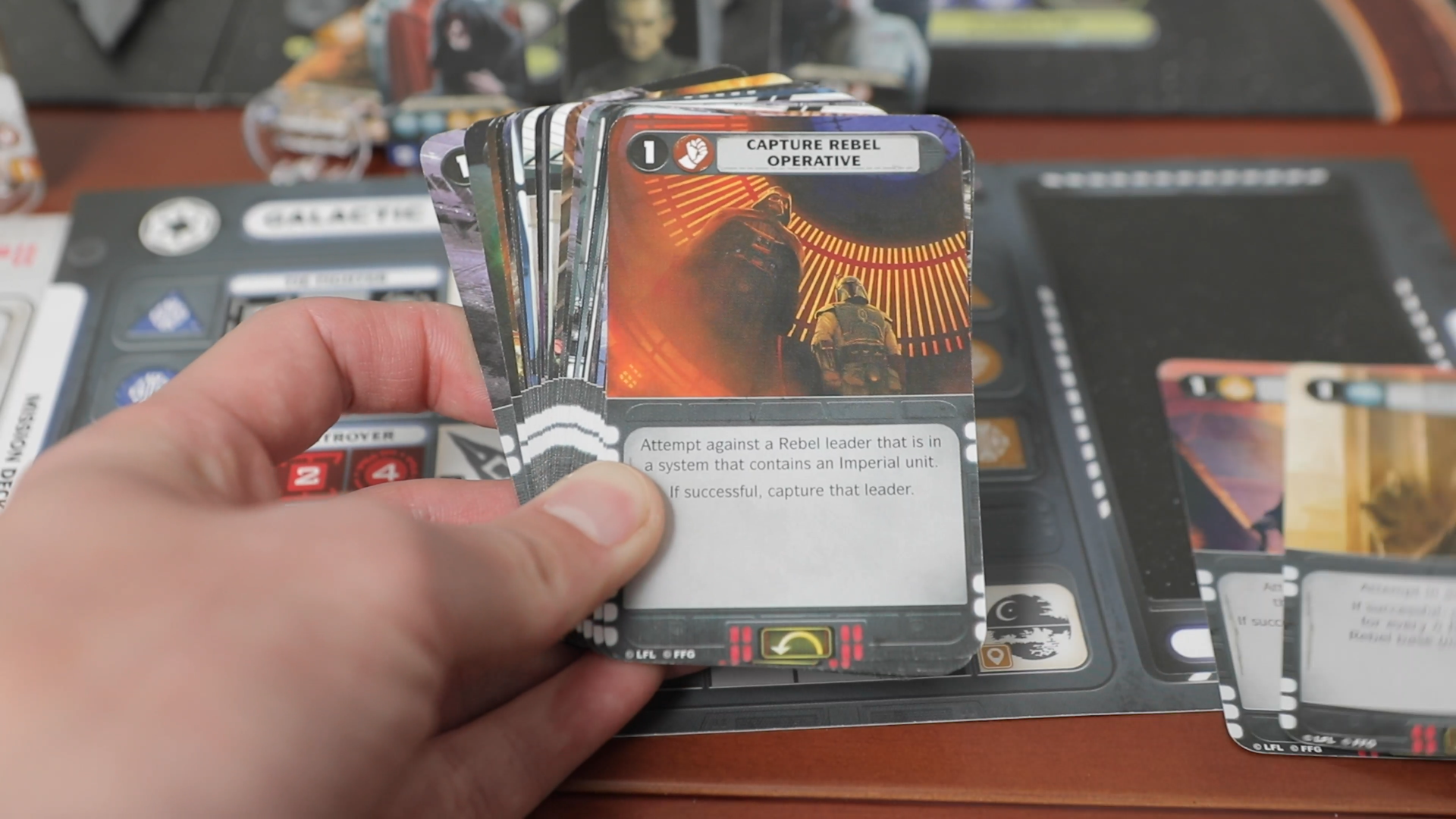Star Wars: Rebellion Review
Dreamboat Star Wars spinoff scenarios.
Play as the Rebels or Galactic Empire in an epic, multi-hour duel across the galaxy. The Empire seeks to destroy the hidden Rebel Base, while the Rebels sabotage and stall for time as they complete objectives.
Video published January 17th, 2021

Potential for massive space battles.

Where is the hidden rebel base!?

Assign leaders to missions, then place them in systems.
Overview & How to Play
This game’s premise sells itself.
You got the Galactic Empire, trying to find the hidden Rebel Base and destroy it. Or play as the Rebels, who are hiding and surviving as long as possible, achieving objectives to raise their reputation, which is points, high enough to overthrow the empire and win the game.
Star Wars: Rebellion’s heart is the Leaders, that do pretty much everything. First, you put them on Missions from your hand, then tell them where to go. If you wanna fight or move troops, you also put a Leader on a space sector (just an area with a planet). Yet this will be a Leader that wasn’t previously assigned to a mission. If both players run out of Leaders to play, well they take them all back and start a new round—and in that sense the Leaders can feel a bit like workers in a worker placement.
Keep playing rounds until one side wins the game.
Pros
Star Wars: Rebellion’s components are straight up jaw-dropping. 153 minis, including countless X-Wings, Y-Wings, AT-AT’s, Imperial Star Destroyers, two different types of Death Stars… one can practically just hear the Star Wars music from looking at this game, whether it be the art on cards or detailed Corelian Corvettes miniatures. In general, this game is super clear to follow with your eyes, with the massive board making sense (especially if you’re a Star Wars fan), and Leaders standing out well.
This game has this David vs. Goliath thing going on with the Rebels vs. Imperials, and its done very well. First of all, the Rebel Base being hidden dictates everything. It MUST stay hidden, because the Rebels have little chance of winning a head on duel with the Imperials. Instead, Rebels win through sneaky Objectives, usually trying to strike where the Imperials are weakest. Some of their main tools are sabotaging and faster movement.
The bureaucratic Imperials, on the other hand, have so many resources at their disposal. Not only do they have access to the best units, they initially control more places. They have a lot to manage, and can’t move as fast as the Rebels, so they have to always be careful about moving troops. To spend tons of taxpayer money, they can just get special Projects cards from a side deck, to maybe… say build ANOTHER Death Star. Plus, Imperials can keep expanding the size of the Empire: every time they land on a planet, they immediately Subjugate its citizens!
But all of the Imperial’s big strong strength can’t always be used in this game, because they NEED to find the Rebel Base in order to win. It’s really that whole: one side has more troops, but one side has the advantage of stealth and/or positioning, and that’s constantly in this game.
The nitty-gritty comes up with Missions, where players have hands of 4 Starting Missions, then draw more, ensuring plenty of options every turn. These just feel incredibly true to the Star Wars Universe and each side, like the Imperial bread and butter “Rule by Fear”. Or the Rebels can 'Infiltrate’ the Imperials to get intel on what Objectives to do next. The nuance comes in the game where Missions’ results aren’t guaranteed, and players can block each other’s Missions with their own Leaders, and then each player performs a dice roll, rolling dice based off of those Leaders’ stats. This starts to make Leaders incredibly tricky to manage, as you might want to save Emperor Palpatine to counter Princess Leia, or you might want to have him go on his own Mission to subjugate a planet to get closer to the Rebel Base.
There’s even certain missions that are buffed when certain Leaders perform them, adding flavor, like Lando Calrissian being great at a ‘Contingency Plan’. This also encourages counterplay once comfortable with the game, as you can start thinking about what missions your opponent is saving Leaders for.
The Rebels need to be very careful about Leaders getting captured by Imperial Missions, or turned into carbonite with another… or worst of all, turned to the DARK SIDE (Lure of the Dark Side Mission)!
Star Wars Rebellion is filled with climatic moments, with epic showdowns of X-Wings and Tie-Fighters actually happen over key points, Leaders potentially switching sides, and devastating units like Mon Calamari Cruisers being built. The clock ticks as the Empire sweeps the galaxy, limiting the locations of where the hidden Rebel base is, while the Rebels stall as much as possible, slowly completing Objectives.
Its also a game filled with hope, where combat can be slightly unpredictable with Tactic Cards that have their own abilities. There are countless ways to bluff the hidden Rebel Base, or the Rebels can decide to move it halfway through the game. But once that Rebel Base is truly found, the game spins on its head as the Empire moves the might of its fleet to destroy it, including with mostly invincible Death Stars. The Rebel fleets will be trying to slow down the upcoming onslaught, while doing side Missions to eek out enough Reputation to win the game.
Cons & Nitpicks
Alas, getting to all this epicness is NOT easy. While there is a simplified, recommended first game with a “Learn to Play”, that will not go smoothly if both are new to the game. This “Learn to Play” has no Table of Contents, and puts “additional rules” that are key to the game near the back. Your first game of this is going to be very herky-jerky with lots of stops, as you constantly look up rules for skill checks, what different icons mean, etc. It’s especially brutal because Star Wars: Rebellion is a pretty open-ended game with plenty of different strategies, but getting to understand that is quite a curve.
Combat is also made much slower than it should be, with no unit counters, and only 10 unique dice. 10 seems like a lot of dice, but in many larger combats each player needs all 10, making combat sluggish. Pacing doesn’t slow down considerably until the late-game big fights, but when it does, accounting for all the swarms of Tie-Fighters, with multiple dice for the strong units, is slower than it could’ve been. And you cannot skip these combat steps because they are so central to the game’s outcome. The more epic the fights are, the more annoying they get.
And Tactic Cards, for the unpredictability they add, are not balanced at all, like a Critical Hit always being good, whereas other cards require you to spend dice to draw cards. Spending something instead of getting it for free is quite a remarkable gap. The game wants you to save up leaders with high tactic values to account for this though, and the luck-sacking is much more prominent in smaller fights.
Final Thoughts
Star Wars: Rebellion is a great game, only really held back by needing Jedi patience to get its engines going. It is a recipe that grows with players’ skills, as new fleet movements and ways to bluff will come up as players continue to duke it out across games. Just note that for all of the fancy miniatures, this is NOT a minis game where the Imperial and Rebel armies just slug it out every turn across space systems, and whoever wins more fight wins the game. Nope.
The Leaders, the characters, do the heavy lifting to get players to the point where battles win the game. And these are tightly locked in an insurgency duel throughout the game.
Another big warning: playing as the Empire may not be everyone’s jam, since guessing the Rebel location for hours requires cross-referencing your actions with an ever increasing pile of information cards. This leads to tons of mind games and is thematic, but pen & paper may be some handy assistance. The Rebels are constantly sabotaging the Empire and ignoring normal movement rules, which are TRYING to frustrate the Empire, but this can turn off players who just don’t want to be frustrated as an Imperial over multiple hours. This is what is so thematically good, and simultaneously can be bad about Star Wars: Rebellion. You really gotta make sure you don’t let the Star Wars theme hype you to the point that you forget that that is a Cat & Mouse game, so make sure you enjoy that dynamic.
















